Flappers from Climbing: How to Deal with Them (2024 Guide)
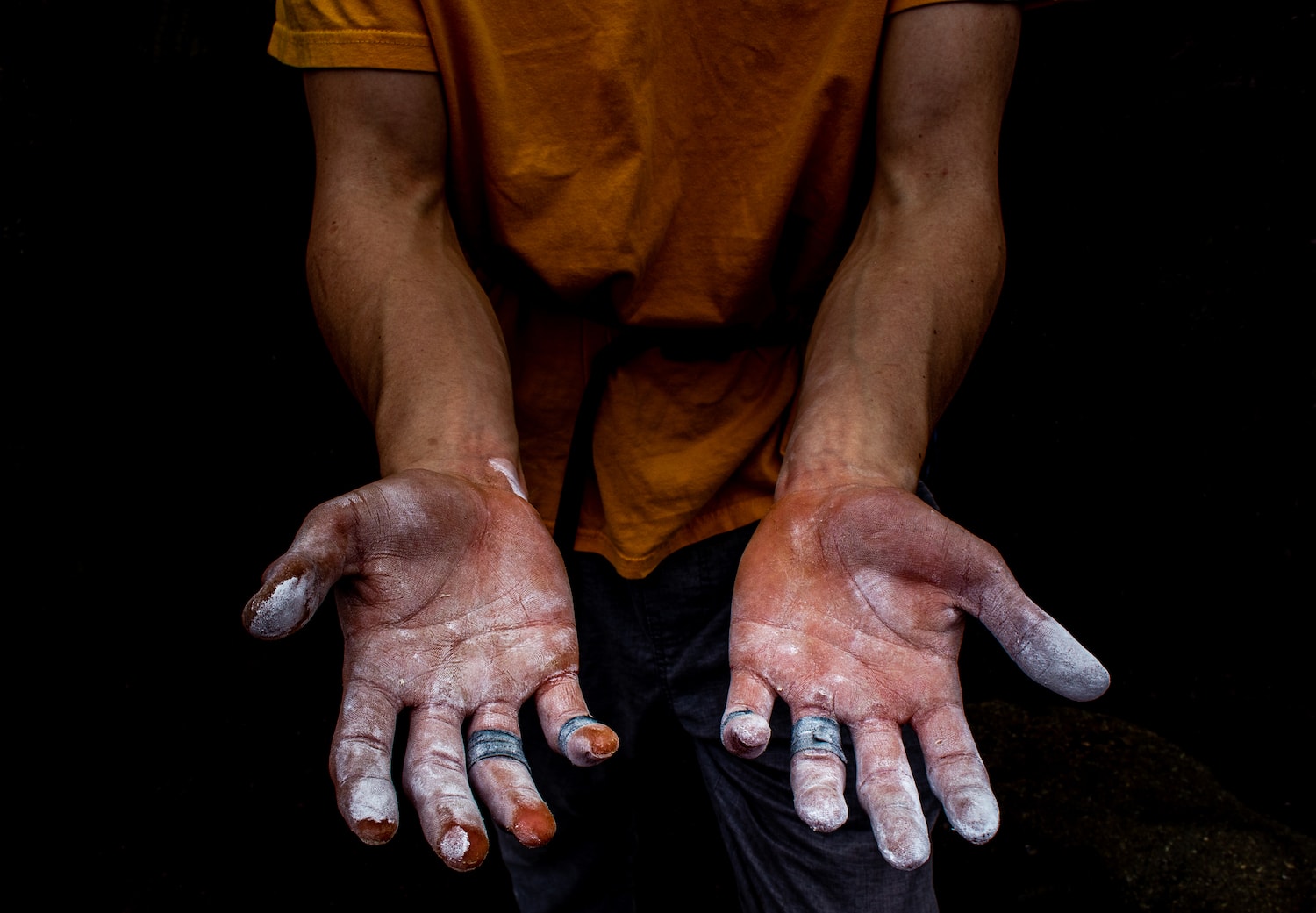
In rock climbing, care and maintenance of your climber hands and feet are necessary. It’s no surprise that climbing is rough on the skin. You’re constantly rubbing against rough textures, dousing your hands in chalk that dries the skin, and exposing it to breaks or tears.
Whether you’re in your first or tenth year of climbing, you’ve probably gotten a rock climbing flapper. They’re not fun, but they are preventable. Skin injuries keep rock climbers away from the crag for weeks if not correctly cared for.
In my years of climbing, I have dealt with many flappers. Combining my experience with a review of the research literature on flappers and similar skin conditions, I’ll provide you tips and tricks to care for and prevent these painful rock climbing injuries.
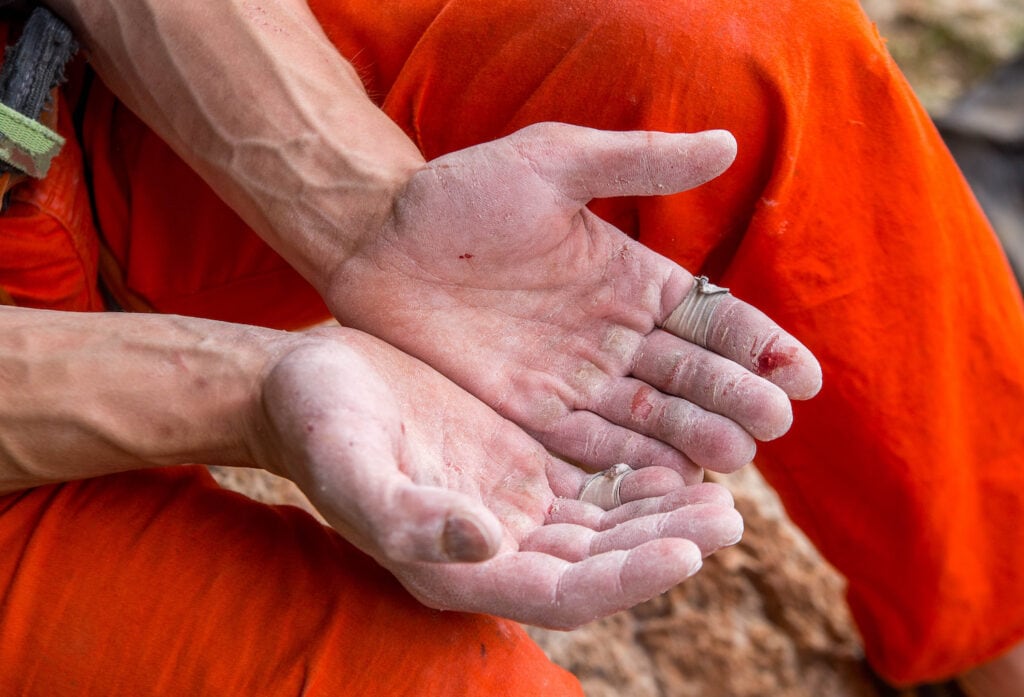
What’s a Flapper?
Flappers are skin wounds, like an open blister, that involve a piece of hanging skin to be left on your hands. Although a flapper is generally limited to the epidermis (the first layer of skin), it’s possibly one of the worst and most annoying climbing injuries. Flappers happen on both the palms of your hands and the fingers, where most calluses form.
Your hands are one of your primary means of climbing, and trying to climb with a flapper is distracting and painful. These skin tears come in all sizes but will affect your climbing and daily activities, regardless.
A flapper can ruin your day during a climbing session or even on a climbing trip. Thankfully proper treatment for quick recovery and taking steps to prevent a flapper is possible.
How Do They Occur?
New climbers may experience flappers more often. Soft skin and fresh hands can easily cause tears when exposed to friction. As your skin becomes more conditioned for climbing, you will be less prone to tearing.
The common causes of flappers are thick calluses and blisters. Rock will catch on the excess skin, tearing a piece away from the hands. Covering any blisters or filing down the rough edges on your calluses will prevent climbing flappers from happening.
Grabbing onto, swinging from, or slipping off a hold is also a frequent culprit for this painful climbing injury. The excess friction on dry skin creates ideal conditions for flappers.

How to Treat Flappers from Climbing
When you experience a tear in the skin while climbing, stop the activity and control any initial bleeding. Immediately wash your hands with soap and water. Make sure to wash away the dirt and chalk, but be gentle around the wound.
Keep the skin flap moist because it will become dry and pull, which will be extremely painful. Removing the piece of skin will increase your risk of infection, so we recommend not to do so.
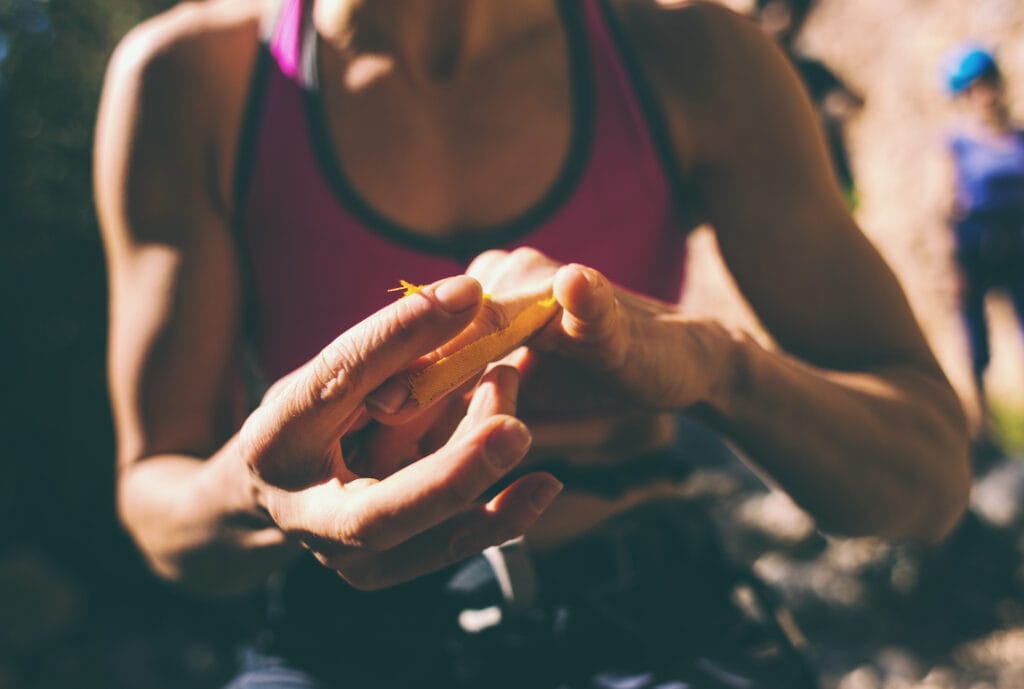
Medical studies suggest leaving the skin flap intact, which protects the surrounding tissue. Consistently monitor your skin for signs of infection and seek medical help if you notice any swelling or excess warmth on or near the affected area or odor (1).
Leave the skin flap on until it’s about halfway healed. Once the area around the loose skin is no longer painful, carefully cut away the flapper with sterilized medical scissors. Keeping the flap intact at this point can cause the skin to catch and tear again.
Finger Flappers
Immediately tend to the wound and keep it clean and dry if you plan to continue your climbing session. Tape flappers with climbing tape to further protect them from infection. For this reason, I suggest carrying climbing tape with you regularly.
Before wrapping your fingers, make sure the wound is clean. Avoid taping around your knuckles or putting the sticky side directly on the wound. Fold over one end of the tape to cover the sticky area and place it over the lesion. Wrap it around your finger twice, securing it on the top of your finger. Some climbers also use the ‘H taping method’ around the knuckles so it won’t obstruct natural movement.
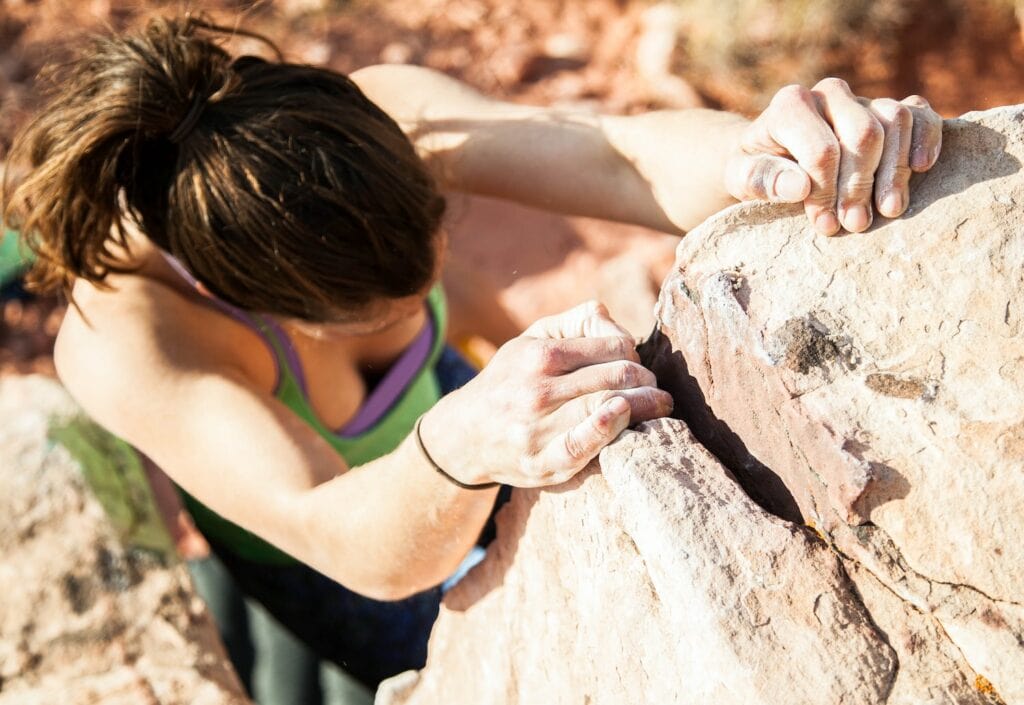
Palm Flappers
If the flapper is located on your palm, start with a longer piece of tape, roughly the length of your forearm and hand. Place the middle of the piece at the base of the finger closest to the torn skin. Wrap the tape around the bottom of the finger once, ensuring both ends have crossed behind the finger and are now facing the palm. Place a piece of gauze or clean fabric over the flapper.
Cross the two pieces of tape over the climbing flapper, wrapping each end around a different side of your wrist. The tape should finish on the top of your wrist. Secure, ensuring the tape is tight but not so tight that you lose circulation.
Keep the wound in the open air to dry when you’re not climbing. Constant moisture on the tear will increase infection risk. Give your hands ample time to rest and heal to prevent extra skin tears.
Remember that the healing process takes time, and you may need to step away from the crag or climbing gym for up to one week. Be patient, and don’t jump back in too quickly if your skin is not ready. You may need additional healing time if you experience soreness immediately after using climbing holds.
The Risks Associated with Flappers
There are risks involved in all physical activity, which is why personal safety is always a top priority. Open wounds risk bacterial infection with the possibility of rapidly spreading and causing dangerous health issues. Assume personal responsibility by taking excellent care of your skin and hands is always a good idea.
Short Term Risks
Bacteria like to hide in the dirt and dust found in the walls at the climbing gym or on surfaces at the outdoor crag. These bacteria end up in open skin wounds if not cleaned or covered. This causes infection and inhibits proper healing.
Long Term Risks
Studies suggest (1):
Left untreated, skin tears can lead to complications such as severe pain, delayed wound healing, localized infection, cellulitis, and even generalized sepsis.
How to Prevent Flappers
The best way to avoid flappers is to take action to prevent them. Prevent climbing flappers by climbing more often. With consistent activity, your hands develop calluses that ultimately prevent flappers. Use a pumice stone, soft sandpaper, or a nail file to file down and smooth any callus that feels rough.
If your calluses often cause major tears, applying antihydral cream to the affected area might be a good option. Be sure to use small amounts and apply to your fingertips and the top of your palms where the callus is. I recommend that you apply it a couple of days before you plan to climb. Be sure to research before using this product, as it has adverse effects with overuse.
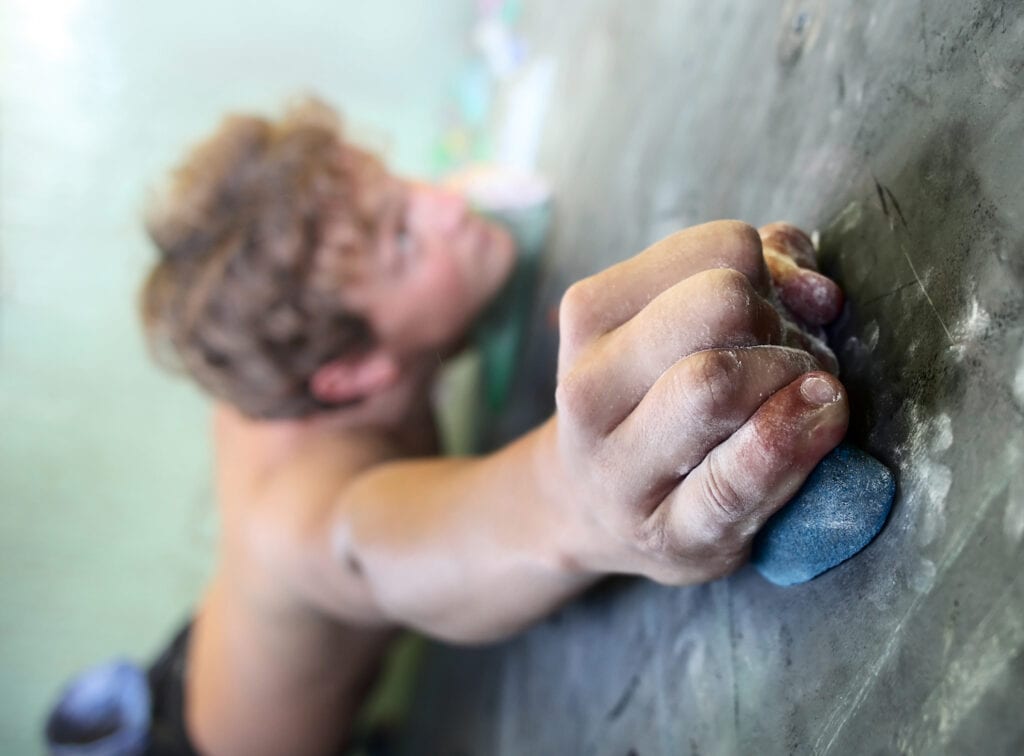
Climbing Technique
Grip strength is key to preventing flappers during climbing sessions. On big holds, like jugs, climbers rely on friction for stability and when their hands start to tire. Big forces and dynamic movements combined with ill-prepared skin almost guarantee a flapper will happen.
Instead, try to prevent moving your hands around too much when grabbing onto a hold. Work on precision. Practice gripping with your fingers over your palm. Switching between static and dynamic routes is also helpful to keep your grip firm.
Change up your technique by relying more on your feet. Doing this will allow for less strain on your hands. Switch between various types of holds to avoid rubbing the same area on your hands. When your hands get tired, give them rest. You’ll notice fewer flappers and stronger hands as you improve your technique.
Manage your session length. Notice the time it takes for your hands to become sensitive and sore. Set a specific time limit for your daily climbing sessions. Over time, you’ll be able to extend your time as your skin becomes more conditioned.

Caring for Your Hands
Healthy skin is crucial for strong rock climbing hands. The better you take care of your hands, the less you’ll experience flappers climbing.
Use these steps after a climb to keep your hands strong and healthy:
- Always wash your hands after a climb.
- Carefully file down your rough calluses to smooth them out.
- Moisturize, moisturize, moisturize. Use a repairing hand cream or lotion.
- Rub a climbing balm onto your calluses for overnight repair and moisture.
- Drink water! Your skin is the largest organ in your body and needs plenty of water to stay hydrated and healthy.
After a rock climbing session, notice how your hands feel and look. As a beginner, your hands are tender and soft. Take a break and allow time for your hands to heal, especially if you have experienced a recent injury. Apply hand cream often during the day, but make sure not to moisturize right before a climb.
During long climbing breaks, be aware that your calluses naturally soften. If this happens, incorporate regular exercise and activity to build your calluses back up. Give yourself extra time to get back into the groove if it has been a while since you last climbed.
Use a climbing balm or climbing salve after a day on the wall to keep your calluses and hands moisturized. A climbing salve or balm locks moisture in and promotes the healing process.
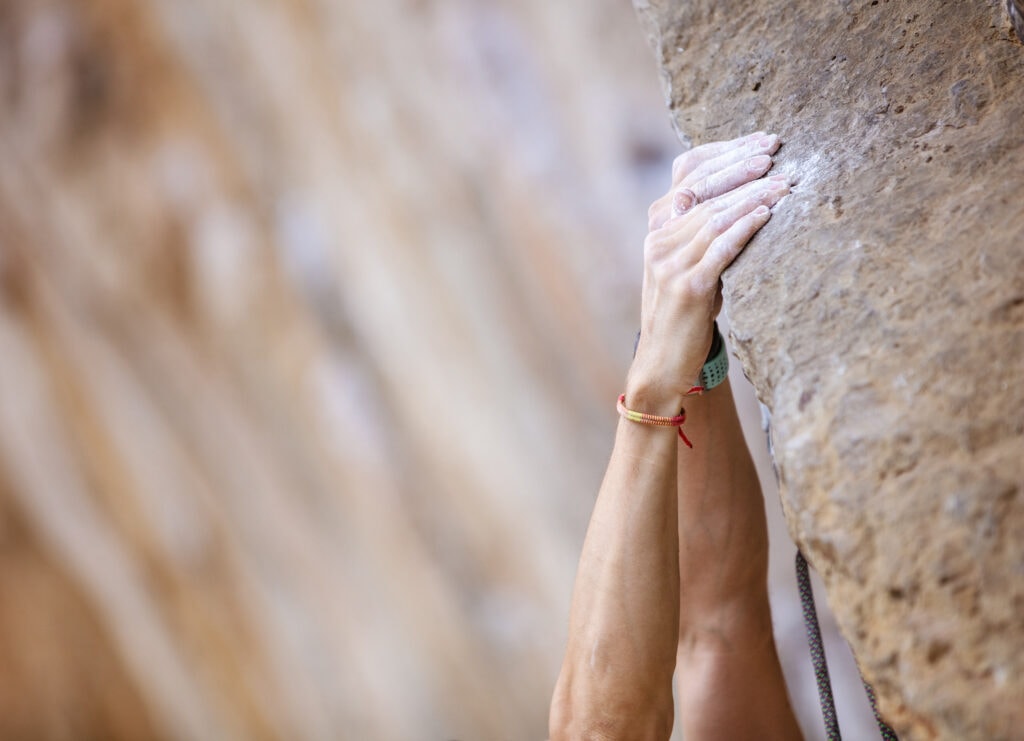
Conclusion
Flappers are a normal part of climbing. You’re bound to get a flapper at some point in your climbing journey. Although it is quite a painful experience, skin tears can be taken care of when they happen. Taking steps to prevent a flapper can also bring a great deal of happiness into your life.
If you’re consistently struggling with flappers, take time to assess and adequately care for your skin before, during, and after your climb. Look for the warning signs that a flapper is about to form. Work on conditioning your hands well so you can climb longer and more comfortably.
Good climbers consistently take care of their skin to keep their hands healthy. It’s a job in and of itself, but there’s no doubt that all the hard work is one hundred percent worth it!
FAQs
Climbing with an open wound will increase your risk of infection. If you’ve washed and effectively wrapped your hands with climbing tape, you should be safe to climb. Many climbers choose to continue climbing depending on their level of pain. Do what feels best for you and climb at your own risk.
Rock climbers often carry tape with them in case of a flapper or blister. Wrap tape around your finger flapper, keeping joints free to move. You can also use the H taping method to prevent taping on the finger joints. Cover upper palm flappers with the nonstick side of the tape or a gauze pad, using your fingers and wrist as anchors.
Like antihydral cream, climbing chalk will dry out your skin. If your hands are too dry, you risk getting a flapper. Liquid chalk might be a good alternative, but the best bet is to discover the right balance of moisture and dryness for you. All climber’s hands are different and will require a unique ratio.
